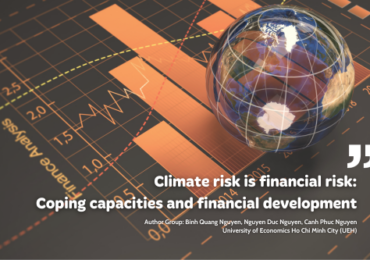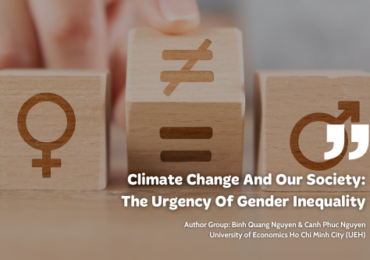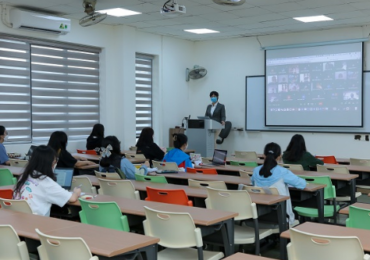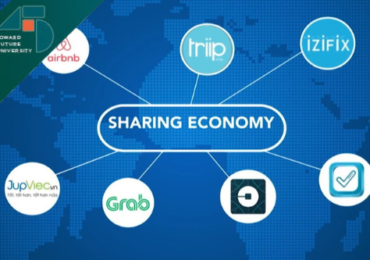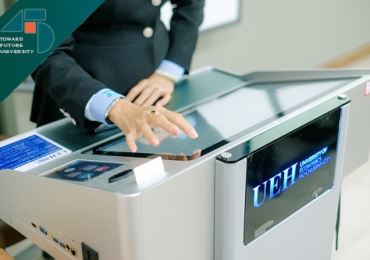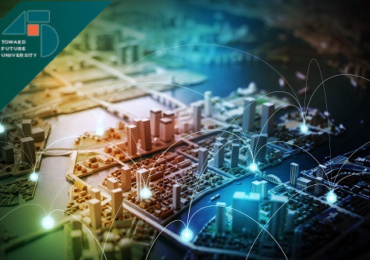Digital Transformation Impacts Towards Urban Development: Opportunities And Challenges For Vietnam (Part 1) – Urban Development Trends, Impacts Of Industrialization And Digital Transformation Towards Urban Development
27 November, 2021
Industrial Revolution 4.0 has brought a variety of opportunities and challenges to urban development process. Digital transformation, an important step in this process, presents significant impacts to urban development around the world, in which, Vietnam is not an exception. This article aims to understand formation-and-development process of cities around the world as well as impacts of industrial revolution and digital transformation towards urban development, to analyze and to draw lessons learned from city digital transformation around the world besides analyzing Vietnamese context. The foundational solutions are to be provided with the purpose of assisting cities and localities across the country with an overview so as to take the appropriate steps before setting goals, developing strategies and implementing digital transformation programs effectively as well as contributing to building a stronger and sustainable Vietnam.
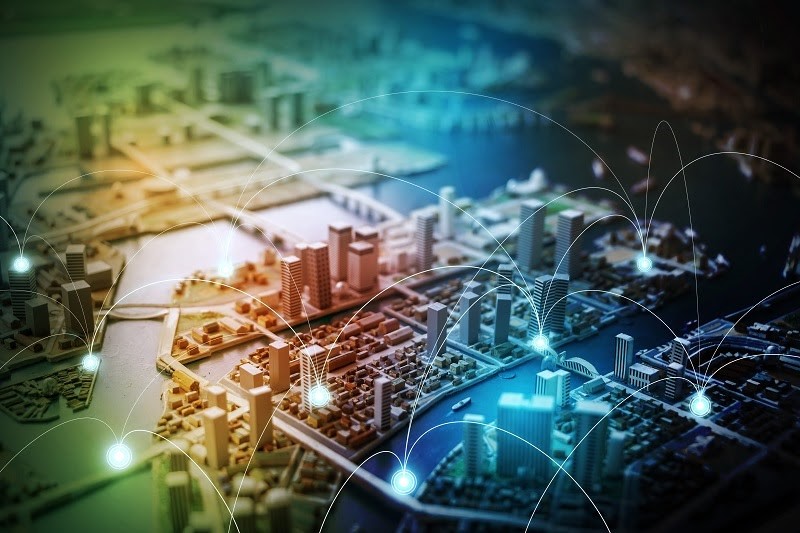
Cities and urban development trends
The fact that rapid urban growth led to the emergence of widely dispersed-or-developed city type in 20th century differed from compact city type of 19th century. This is precisely results from rapid industrialization, new technological inventions (automobiles), abundant land resources and cheap fossil fuels (Brilhante and Klaas, 2018; Lehmann et al., 2011). The ubiquitously constructed transportation and infrastructure systems also contribute to environmental degradation, natural resource destruction, traffic congestion and excessive fuel consumption in many cities around the world. (Co-operation and Development, 2012; Freire, 2013). It is because of these facts that have prompted urban researchers to start their journey to introduce new urban types towards sustainable development in order to promote economic growth, environmental protection and social justice (Brilhante and Klaas, 2018; Campbell, 1996).
Since the 1980s, types of sustainable cities, in accordance with the above criteria, have been researched and developed. Following types of Green city, Eco-city, Carbon emission reduction city concentrate on environment whereas livable and sustainable city type emphasizes economic aspect and types of knowledge city, city smart city and so on focus more on social factors.
Green cities are defined as those that are environmentally friendly to ensure sustainable consumption (UNEP, 2011). In addition to greening-the-city activity, other criteria of a green city are: clean air and water, clean streets and parks, self-healing ability against natural disasters, infection risk reduction from disease and an encouraging-place for green behaviors, like: using public transport, creating more green space for the city (Kahn, 2007). Typical examples of green-city are Copenhagen (Denmark), Bristol (UK), Barcelona (Spain) (Anguelovski et al., 2018; Brüel, 2012; Ersoy and Larner, 2020). Besides, eco-city is known as a “circular” urban environmental system in which inputs (resources) and outputs (wastes) are minimized (Register, 1987). Curitiba (Brazil), Freiburg (Germany), Stockholm (Sweden) and Adelaide (Australia) are considered the top eco-cities in the world (Kaltenegger and Fink, 2016).
In livable cities, livability refers to life quality achieved by city dwellers, including physical, social, spiritual and personal development factors founded on the principles: equity, dignity, accessibility, confidence, participation and empowerment (Cities, 2003).
Sustainable cities aim to meet city residents’ basic needs: infrastructure, living facilities, health and medical care, housing, education, transport, employment, harmonious management coordination to ensure benefits for all social segments (Ibrahim et al., 2015), with representatives as Hong Kong, Singapore, and Copenhagen (Denmark). On the other hand, knowledge cities are oriented towards knowledge-based development by encouraging continuous creation, sharing, evaluation, innovation and regular knowledge updating (Ergazakis et al., 2004).
With the explosion of modern technology, in order to meet human beings’ new needs in recent years, Industrial Revolution 4.0 impacts and strong digital transformation activities as well as solving the remaining problems in existing types of current cities and smart cities have become a development trend for many cities around the world. In fact, many approaches and definitions of smart cities (Wall and Stavropoulos, 2016) and city development towards smart cities is not the same in all countries and localities in the world. In the most general way, the authors approach a smart city as a city type that uses/applies modern technical technologies to effectively solve the existing problems within the city in the future through all resources that can be used/mobilized towards sustainable development and improving urban residents’ life quality. Currently, many cities in the world: London (UK), Paris (France), Singapore, Barcelona (Spain), Amsterdam (Netherlands) are always listed in the smart city rankings in the world. (Mancebo and Sustainability, 2020; Willems et al., 2017).
It can be stated that city types (mentioned above) and other various city types in the world have been born and developed with the following purposes: (1) Solving the urban problems created during city operation progress faced by the urban population; (2) Meeting city population’s new needs or enhancing city’s unique values with the ultimate goal towards the sustainable development and improvement in urban dwellers’ life quality. The resolution of these urban problems must be consistent with the natural, economic, social and cultural characteristics of each city. That these actions create distinctive urban images can be considered as city typical identity during this time. These typical images are what each city needs to form, preserve and promote in order to create its own distinguished features and ensure competitiveness in socio-economic development process.
Impacts of Industrial Revolution and Digital transformation to urban development
From the end of 18th century to the beginning of 21st century, humanity has been through 03 Industrial Revolutions and is entering 4th Industrial Revolution (Industrial Revolution 4.0). Each subsequent industrial revolution, as a development to a new height, gradually completes the shortcomings or problems of the previous industrial revolution; concurrently, carrying certain impacts on urban development.
Industrial Revolution 1.0 opened a new era in human history with new production technologies (mechanics, mechanization) leading to large-scale urbanization and contributing to urban growth (Bernhard et al., 2014).
Industrial Revolution 2.0 has created new premises and solid foundations for further industrial development (automation in production, electrification of factories and modern production lines), creating development impetus for new urban areas, providing better living conditions as well as improved urban sanitation for workers, contributing to urban sprawl and clear distinction related to land use purposes (Bernhard et al., 2014).
Industrial Revolution 3.0 has pushed humanity forward significantly, producing a more-interconnected-world through information technology (IT) development (also known as Digital revolution) as well as semiconductor, supercomputer, personal computer (1970s and 1980s) and Internet enhancement (1990s), radically changing the forces of production and all spheres of social life in all regions (rural and urban areas), creating favorable conditions for saving natural resources, social resources, changing the structure of social production and so on, causing cities to return to the city with more compact structure, the need to develop sustainable city types to ensure residents’ life quality as a prerequisite for governments to choose. During this period, compact cities or eco-cities have begun to develop strongly (Bernhard et al., 2014).
Inheriting from human development, Industrial Revolution 4.0, gradually appearing with blurring boundaries among physical, digital and biological fields, is considered as one multi-technology fusion and with the world center. Technology development creates entirely new production possibilities with a profound impact on economic, political and social life of the whole world (Schwab, 2017). Some typical technologies can be mentioned: big data, artificial intelligence (AI), cloud computing, Internet of things (IoT), blockchain, 3D printing technology, virtual reality. Industrial Revolution 4.0 is taking place; consequently, it is not possible to summarize all the impacts on urban development. However, Industry Revolution 4.0 has promoted the urban type development: smart cities and ubiquitous cities. The factors of sustainable development and population’ life quality have become the development focus point towards cities and other regions; therefore, this industrial revolution can bring the industry with clean production technologies with more environmentally-friendly feature with less adverse effects on additional land uses, like housing, compared to previous production technologies.
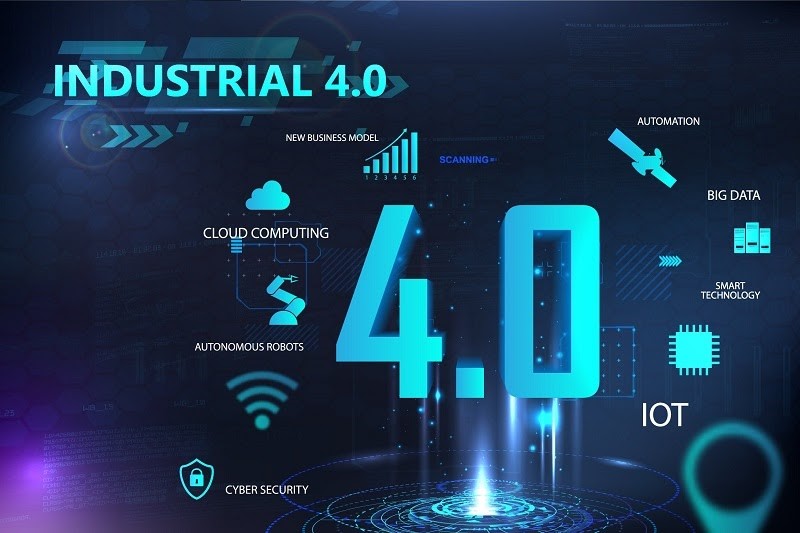
Digital transformation – one basic toolbar must be implemented thoroughly and effectively to develop in accordance with the current trend in Technology Revolution 4.0.
Digital transformation is defined as the use of data and digital technology to completely and comprehensively change all aspects of socio-economic life, reshaping the way we live, work and relate to each other (N.T, 2020). Digital transformation needs to be distinguished from Digitization – a concept that exists in two forms: data digitization and process digitalization (Rijswijk et al., 2020). Data digitization is the transformation conversion from a physical or analog signal to a digital format (Autio et al., 2017). Meanwhile, process digitization is the process of applying digital technology to optimize existing processes in an urban area by flexibly and effectively coordinating between smart services, improving existing provided services (Talwar et al., 2020), increasing residents’ experience (Verhoef et al., 2021). Data digitization and process digitization are both seen as an important part of digital transformation, enabling a wide range of digital transformation activities whereas digital technologies of greater complexity are selected to create interactions on different subjects, for example, between digital technology, institutions, people, organizations, environment and so on. From this foundation, digital transformation is a required transformation to promote the process digitalization based on digital policies (Bertola et al., 2018). Digital transformation is the most profound stage to identify new business models by logically deploying intelligent services (Verhoef et al., 2021), also, digital transformation also alters the way knowledge of how cities/municipalities are operating while going beyond process digitization by changing fundamental tasks and processes within the city/urban (Caponio et al., 2015).
Digital transformation process and technology development introduce positive improvements towards sustainable urban development aspects (Vial, 2019). From an economic perspective, the modern city is seen through a digital lens, leading to changes in urban economy in all developed countries and some developing countries (Vrchota et al., 2019). Digital transformation also plays a role in developing social justice within the city: creating new jobs, increasing labor productivity, work efficiency, service quality and so on (OECD, 2019b). Meanwhile, digital transformation also makes an important contribution to the sustainable development of the urban environment (Feroz et al., 2021): applications of AI, Big data, IoT for environmental sustainability improvement (Balogun et al. 2020), infectious water-borne disease identification (Goralski and Tan, 2020), carbon emission reduction and waste minimization into the environment (Demartini et al., 2019) and so on. It should be stated that Digital transformation plays an important role for urban development in Industry Revolution 4.0 era, stemming from the desire of solving thoroughly the existing problems in urban areas to form a unique identity of the city/urban in handling selected problems.
This paper is in Book series “VIETNAMESE ECONOMY TOWARDS DIGITALIZATION PATHWAY”. Please follow full research “Digitalization Impacts in urban development: Opportunities and challenges towards Việt Nam” here.
Author group: Dr. Trịnh Tú Anh, MSc. Phạm Nguyễn Hoài, MSc. Trần Thị Quỳnh Mai, Institute of Smart City and Management (ISCM), UEH School of Technology and Design.
This writing is in Series Spreading research and applied knowledge from UEH. We would like to invite distinguished readers to look forward to News Podcast ECONOMY #15 DIGITAL TRANSFORMATION IMPACTS TOWARDS URBAN DEVELOPMENT: OPPORTUNITIES AND CHALLENGES TOWARDS VIỆT NAM – PART 2: SUCCESSFUL DIGITAL TRANSFORMATION IN THE WORLD AND SUGGESTIONS FOR VIỆT NAM
News, photos: Author group, Department of Marketing and Communication

